Two-minute review
Everyone’s going crazy for mini-LED TVs in 2022 – and we can see why. They offer both high brightness and killer contrast in a single package. But can the technology really challenge OLED for the title of best TV tech?
On Philips’ 9636 models we’re ultimately not quite convinced of that, but make no mistake, the Philips 65PML9636 is surely one of the better non-OLED TVs you’re ever likely to clap eyes on.
Image-wise that’s down to lusciously deep black levels. Created thanks to the sets’ 1,096 Mini LED zones that create a 32x32 grid of individually dimmable areas, the contrast between bright and dark – and the convincing look of the dark – is unlike any other LCD TV we’ve seen.
Can this new backlight technology reach OLED levels? On black levels, almost; the 65PML9636’s 2000-nit peak brightness (1500-nits on the 75PML9636) makes it noticeably brighter, and therefore arguably with more accurate colours when watching in HDR, HDR10+ and Dolby Vision.
However, when we watched the 65PML9636 alongside a same-size OLED we did notice some slight struggles with contrast, shadow detail, and motion. Philips and its latest-gen P5 image processing engine have gotten rid of most of the LCD nasties during contrast-heavy scenes and fast-moving action scenes, but not all. You’ll still find better motion-handling, and therefore more detail, on OLED TVs.
Elsewhere, the 9636 impresses with a mostly slick Android 10 user interface (cue apps galore and Google Assistant), a sleek leather-backed remote control, and a built-in Bowers & Wilkins speaker with Dolby Atmos. The latter impresses, though ‘AI mode’ doesn’t do much so we’d love to see a ‘music mode’ shortcut on the remote.
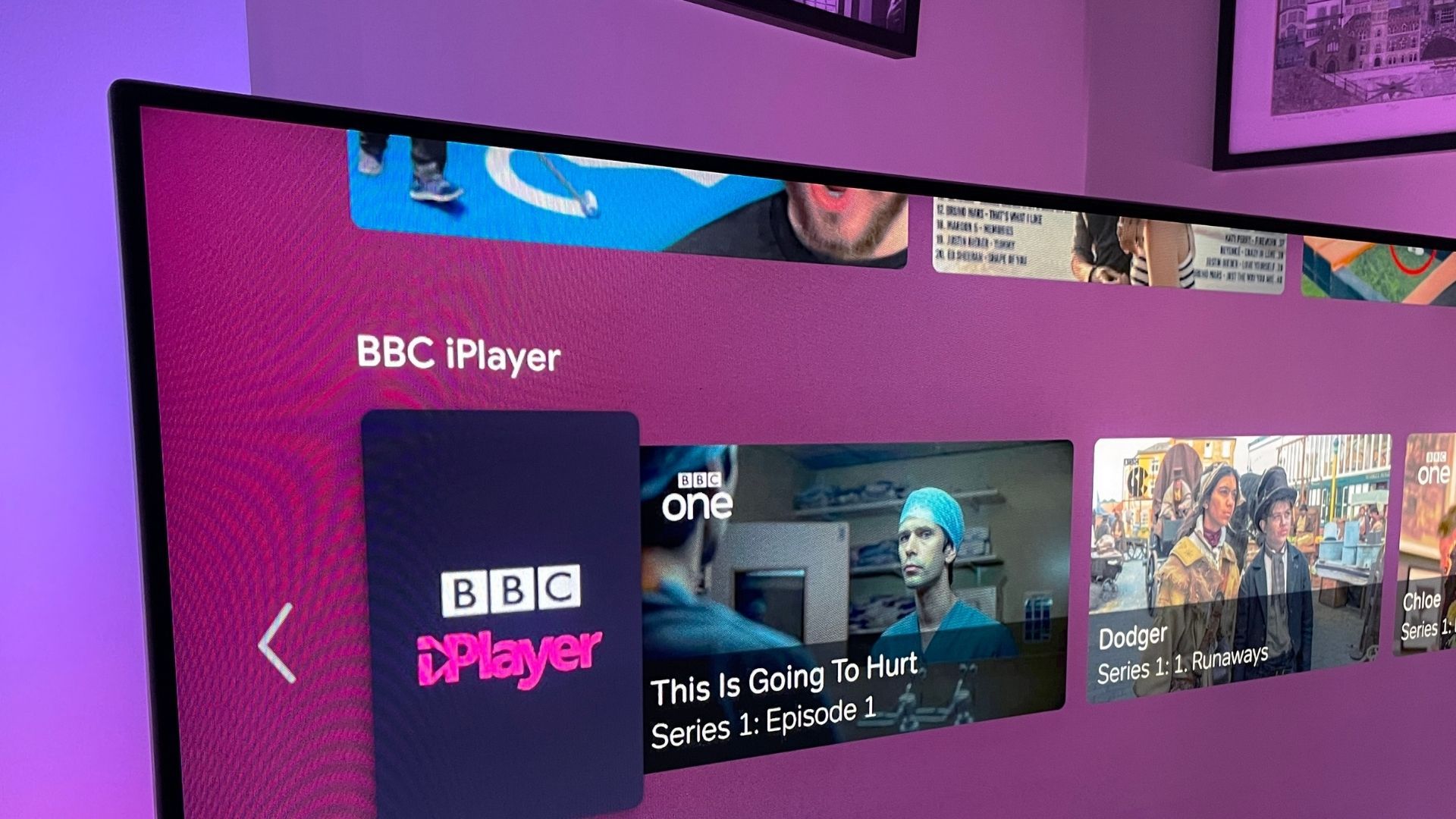
Finally, Philips’ Ambilight bias lighting feature, presented on the 9636 in its four-sided guise (at its best if you wall-mount the TV – that option is included in the box). It’s colourful, accurate, and really lends a wow factor to content when watching in a blackout, something the 9636’s new panel makes perfectly possible.
Overall the 9636 impresses as both a tech demonstration and as a great value all-in-one TV that significantly narrows the gap to OLED. There's room for improvement here, but it's a strong showing for the successor to traditional LED-LCD sets.
Price and release date
- Part of Philips’ 2022 TV collection
- Pricing starts at £1,999
- Competing with the Sony X95K 4K Mini LED TV and Samsung QN95A 4K Neo QLED TV
The 65-inch 9636 is part of four mini-LED TVs in Philips’ 2022 TV lineup. It and its 75-inch partner in the 9636 Series have the same Bowers+Wilkins speaker stand found on the company’s OLED+935 Series of OLED TVs from 2021.
Both the 9636 Series and the step-down 9506 Series feature 4K resolution, mini-LED backlight tech and four-sided Ambilight, but while the 9636 has 2,000 nits brightness and a 3.1.2ch, 70W Bowers & Wilkins speaker stand, the latter has 1,500 nits, fewer locally dimmable zones and weaker built-in speakers.
Here's the price breakdown of each model:
- Philips 65PML9636 (£1,999)
- Philips 75PML9636 (£2,399)
- Philips 65PML9506 (£2,099)
- Philips 75PML9506 (£2,199)
Design
- Four-sided Ambilight TV
- 70W 3.2.1-channel Bowers & Wilkins speaker stand
- 4x HDMI 2.1 inputs
Replete with a super-slim brushed aluminum silver bezel, the 9636 is a fine-looking TV, with the highlight being the Bowers & Wilkins integrated speaker stand. It can’t be detached and it can’t be used with other devices – there’s a proprietary cable linking it to the TV – but it can stay in place if the 9636 is wall-mounted (there’s a 400x200mm VESA mount in the box).
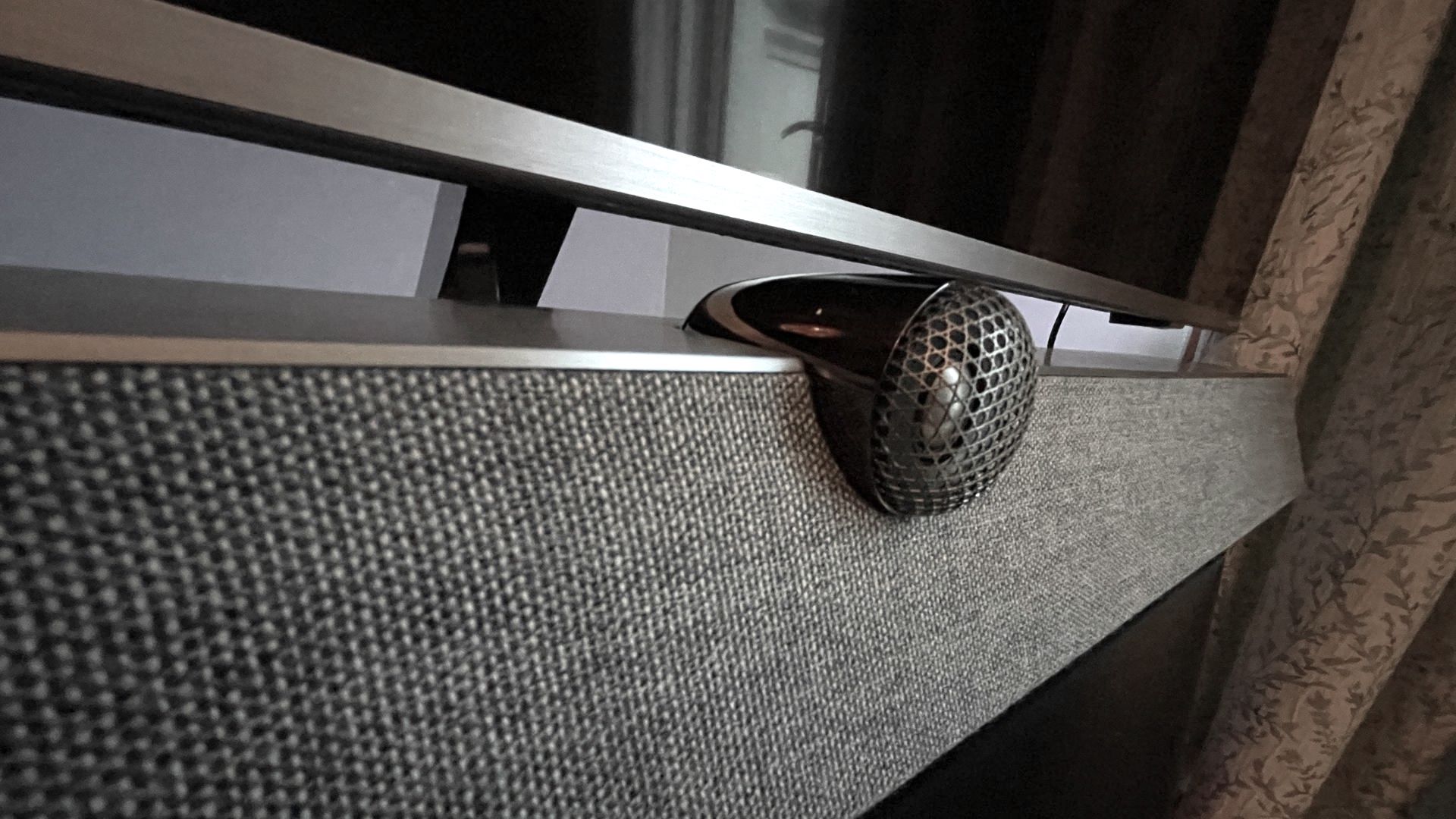
Screen Sizes: 65, 75-inches | 4K: Yes | HDR10: Yes | HLG: Yes | Dolby Vision/Atmos: Yes/Yes | Panel technology: LED-LCD | Smart TV: Android TV | Curved: No | 3D: No | Inputs: 4x HDMI 2.1 (1x eARC), 3x USB, RF, satellite, ethernet | Outputs: optical, subwoofer, headphones
That speaker measures 880x100x286 mm (for both the 65PML9636 and the 75PML9636). The speaker’s design flourish is surely its tweeter-on-top design, though the 9636’s overall design-win is four-sided Ambilight, which can be kept four-sided for wall-mounting and swapped to three-sided if not.
The 9636 has plenty of ins and outs. It’s good to see HDMI 2.1 inputs here – two ARC-compatible on the side and two on the rear (one of them eARC-ready for Freesync and VRR) alongside three USBs, Ethernet LAN, satellite and RF inputs, and outputs for optical audio, headphones, and a useful subwoofer output.
One of the HDMI inputs deals in 4K at 120Hz, variable refresh rates (VRR), and automatic low latency mode (ALLM) for gaming, though only in half-resolution.
A final design highlight on the 9636 is the remote control, a long, slender, and leather-backed aluminum affair that lights up when pressed. It’s easy to use and the buttons are well placed, but while we appreciate the shortcut buttons to Netflix and Amazon Prime, we’re not sure UK users want Rakuten TV … surely Disney+ would be better?
Smart TV (Android TV)
- Android 10
- Quad-core processor
- Amazon Prime, Netflix, Disney+, YouTube and Apple TV
The 9636 sports the Android 10 operating system, which sees a colourful user interface for smart TV options. By default the 9636 comes packed with apps; Amazon Prime, Netflix, Disney+, YouTube, Apple TV – all in 4K – as well as BBC iPlayer, ITV Hub, All 4, My5, UKTV, Red Bull TV, Spotify, and the Google Play Store.
There’s Rakuten TV, too, and a web browser. Naturally, it also features the Google Play for Android TV app store, so you can sign-in to a Google account and download other apps to its 16GB innards, but you don’t have to. Overall there’s a focus on content discovery and personalized content.
Philips provides its Quick Menu for choosing a source and altering picture and sound settings, but it’s not always that easy to use.
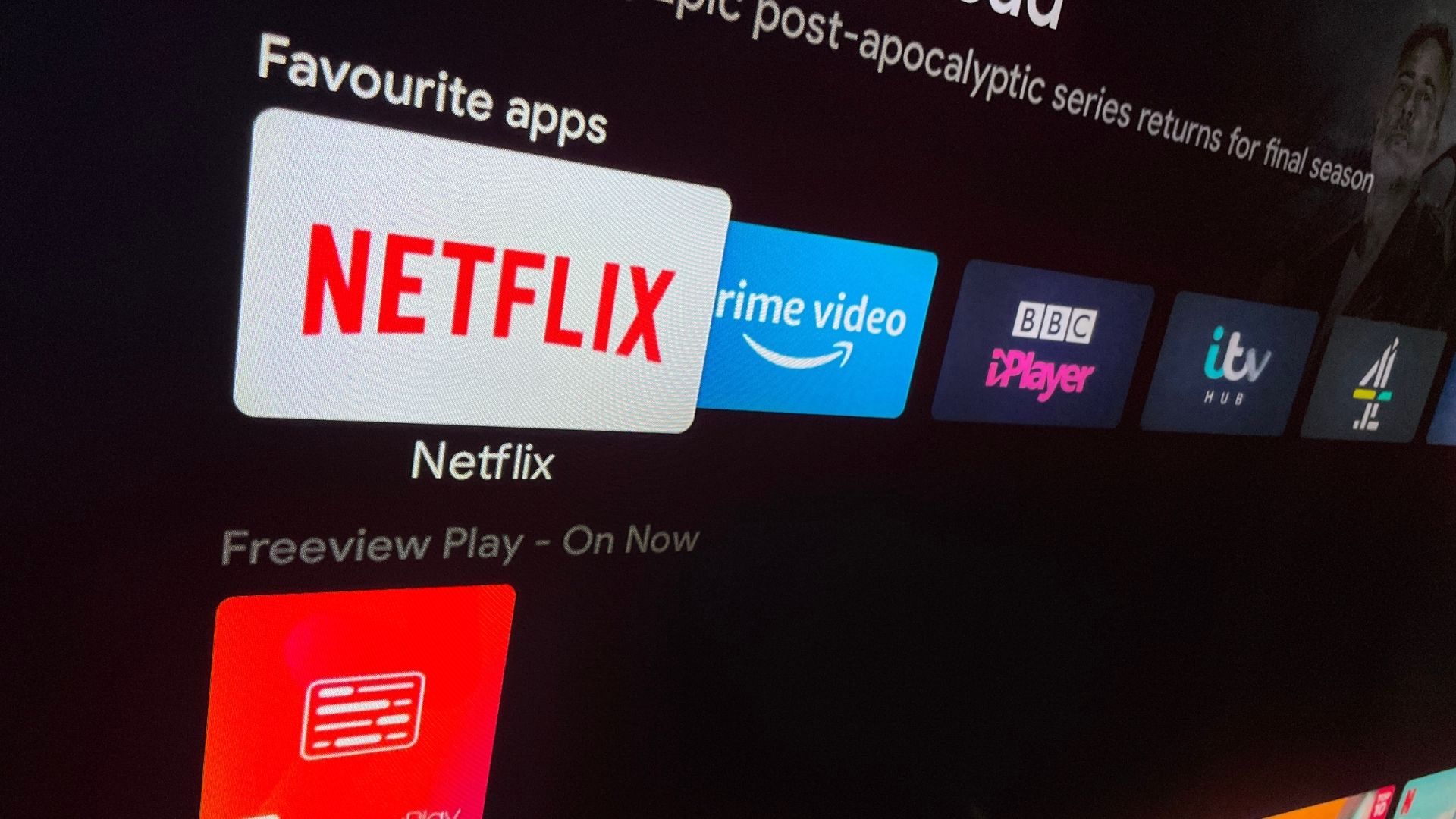
As well as some of the key picture settings being buried way too deep in the system we had a few issues calling up picture and sound settings when apps were operating. For instance, we couldn’t access the Quick Menu or the Ambilight menus from within the BBC iPlayer; call-up Quick Menu and the app simply closes, the home screen returns and only then does the menu pop-up.
We were also disappointed that our Virgin Media set-top box wasn’t automatically selected as a source when switched on.
Picture quality
- P5 AI perfect picture engine
- Dolby Vision / HDR10+ / HDR10 / Hybrid Log-Gamma (HLG)
- 120 Hz variable refresh rate
What’s the point of the Philips 9636? With OLED everywhere – including throughout Philips’ own line-up of TVs – the decision to also have a few different high-spec choices of LCD TV might seem a strange one.
In short, is mini-LED better than OLED? The Philips 9636 puts up a brave performance – and hugely impresses on brightness, contrast and colour – but in a blackout, it doesn’t quite reach the levels of the best OLED TVs.
The 9636 uses Mini LED backlighting, the latest and greatest tweak to LCD TV tech. The LEDs that make up its direct LED backlight are miniaturised so much that a whopping 1,024 independently dimmable zones of them are squeezed into the panel in a 32x32 grid. That’s impressive, but it’s still not pixel-level control as found on an OLED.
The 9636 is bright across the panel, with no obvious clusters of LEDs, and doesn’t appear to suffer from anything but a very slight reduction in contrast and colour if watched from a wide angle.
With excellent colour reproduction, it’s also capable of achieving very deep blacks and, just as importantly, deep blacks and bright whites alongside each other without any noticeable spillage between the zones or glowing halo effect (something also known as blooming). So exactly how black are the blacks? They’re proper, inky black, though we did notice during some scenes that there was a slight loss of detail within.
Sure, there’s the odd moment when you see bright, white lettering on a black background that halo, and stars in the night sky that aren’t as bright as on an OLED, but it’s never a major issue. Subtitles appear perfectly readable.
The Phillips P5 image processing engine presents a lot of image tweaks despite them not being particularly easy to access. Only when watching regular fare do the 9636’s AI Picture Style menus come to life.
Here you’ve got a few presets to choose from, including vivid, home cinema (which introduces just enough smooth video interpolation), standard, filmmaker mode (which removes all processing and suffers from motion blur), game, monitor, ISF Day, ISF Night and Calman (a calibration suite for industry standard-colour accuracy).
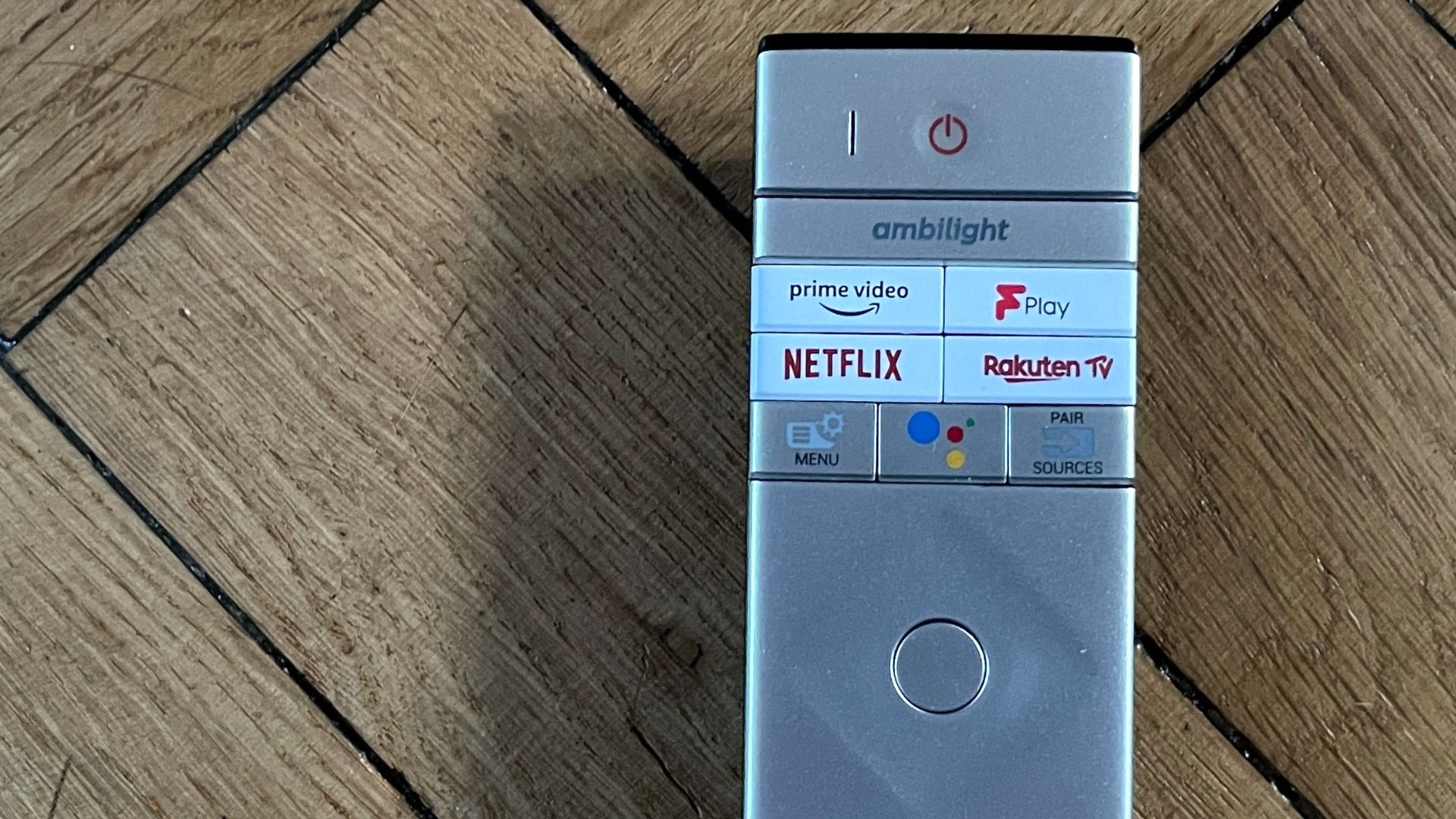
We settled on home cinema for TV and ISF Day and ISF Night for movies, the main issue consistently being that the 9636 makes it tricky to get a balance between realistic-looking skin tones and perfect colour saturation in the rest of the image.
When it comes to HDR, the 9636 has you covered, with support for HDR10, HDR10+ and Dolby Vision and HLG, the latter is used by broadcasters; a run-through of Planet Earth II on the BBC iPlayer app showed-off the 9636’s skill with colour and detail.
During a run-through of Tom Clancy’s Jack Ryan on Amazon Prime Video in Dolby Vision we noticed that in some scenes at night it was very difficult to see what was going on, with bright streetlights in dark science lacking pizazz.
The 9636 also offers HDR10+Adaptive, which kicks-in automatically whenever any kind of HDR format is detected. What it’s doing here is measuring the ambient light levels in a room and adjusting the brightness of the HDR content on the screen scene by scene, but it appeared to work really well in a living room. Watch in HDR and you get AI Picture Style options like HDR Vivid and HDR Home Cinema and – if relevant – Dolby Vision Bright (Philips’ own mode) and Dolby Vision Dark (the original Dolby Vision mode).
At the other end of the scale, the 9636 impresses with standard definition and HDTV fare, with very little picture noise, blocking or upscaling nasties evident. During some rugby on BBC 1 HD we tried out Fast Motion Clarity mode – which uses 120Hz black frame insertion – which cleaned up some motion blur but didn’t seem that effective at increasing detail. The strength of Perfect Natural Motion and some more basic motion options prove tricky to get right, though that’s largely because there’s less need for them.
So what about Ambilight? The colourful bias lighting is a hit on the 9636, though it does depend on how you mount it; only if you wall-mount it – which you can do (there’s a VESA mount in the box) – will you get much from the down-firing LEDs on the back of the 9636.
The conclusion we have about the LED-packed 9636 is perhaps not unexpected; it’s brighter than OLED in a bright room, it’s got truly excellent colour reproduction and inky blacks … and it’s slightly less convincing than OLED on ultimate contrast in a blackout. For those simply after better black levels, the arrival of 1,000+ zone Mini LED tech looks set to be around for a long while.
Audio
- 3.1.2-channel, 70W Bowers & Wilkins speaker stand
- Dolby Atmos
- DTS Play-Fi
The 9636 has some seriously impressive integrated audio compared to most TVs. A fully integrated speaker stand (not an add-on soundbar; it cannot be used without the TV), its Bowers & Wilkins speaker, situated below the screen, comprises 2x 10W mid-speakers, 2x 12.5W up-firing height channels for Dolby Atmos effects, and a 20W woofer in a total 70W 3.1.2-channel speaker array. As well as Dolby Atmos it handles Dolby Digital and DTS-HD (M6). It’s covered in acoustically-transparent cloth.
If you want some high-octane action movies or TV then this speaker does well, with Movie Mode creating a bright, balanced soundstage with lots of background detail, obvious dialogue, and plenty of bass. The addition of height channels makes a big difference, even if finding sources on streaming apps is tricky. We watched Tom Clancy’s Jack Ryan with Dolby Atmos sound on Amazon Prime and the presence of height channels didn’t make an obvious difference.
However, if you watch a news TV channel on Movie Mode then a dialogue-dominated mix lacks mid-range and always seems to come from the bottom of the screen. A dedicated Dialogue Mode comes in very handy and also seemingly anchors the audio higher up the screen.
Ditto for music. During a performance of the Manic Street Preachers on BBC 2 the Movie Mode buried the vocals and allowed background instruments to dominate, whereas Music Mode brings everything into balance.
However, we wish there were shortcuts buttons on the remote because the AI Mode – which is supposed to choose the correct audio mode for the content – doesn’t appear to do anything. So swapping between the various audio modes is a rather long-winded affair.
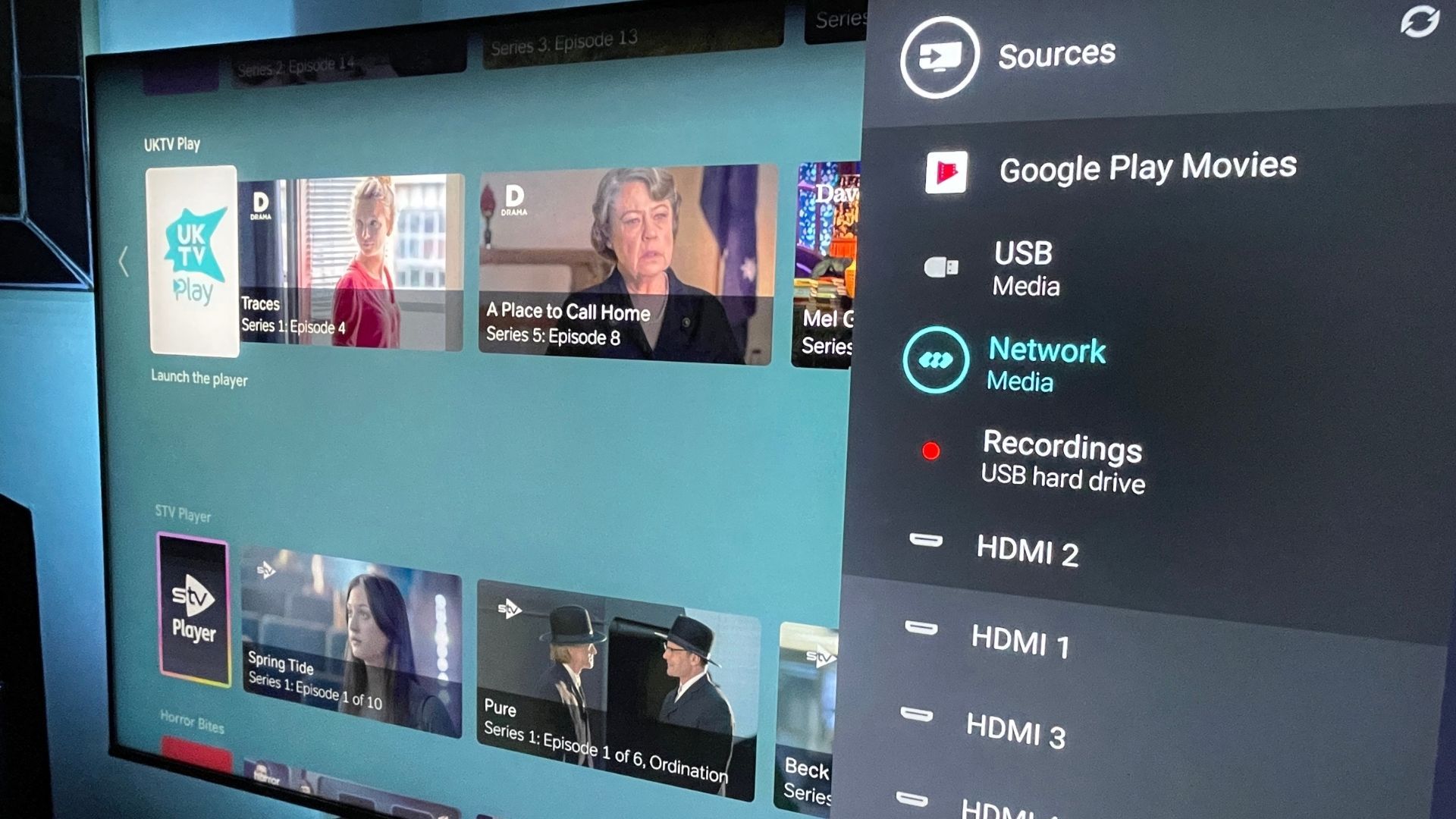
We also noticed a slight lip-sync issue while watching the BBC News channel from a Virgin Media set-top box via HDMI 2.
These (mostly remote control-related) niggles aside the Bowers & Wilkins speaker is adept and impressive – and streets ahead of most TVs – though if you really wanted to get the absolute best of it consider adding a subwoofer.
Should you buy the Philips 9636 4K mini-LED TV?
Buy it if ...
You want one of the most cinematic LED-LCDs TV so far
One of the main reasons that a lot of the picture tweaks available on the Philips 9636 aren’t that impressive is that they’re not much needed. The Philips 9636 isn’t prone to much motion blur and nor is its lack of black levels ever an issue.
You love Ambilight
Adored by some and regarded as light pollution by others, there’s no doubting that the love-it-or-hate-it Ambilight is a unique reason to buy a Philips TV. That’s definitely the case on the Philips 9636, though to get the best of its four-sided design you should wall-mount it (there’s a VESA mount in the box).
You want to maximize colour and minimize burn-in
Is image retention still an issue with OLED? Not really, but if you detest even the suggestion of it then mini-LED is for you, with the added bonus of some extra colour volume (99% of the DCI/P3 colour space) compared to OLED … though 99% of people won’t notice any difference.
Don’t buy it if ...
You hate fiddling with the settings
The 9636 is capable of some exceptional images, but not out-of-the-box. It requires some time and attention to set-up and the patience to make changes depending on what you’re watching.
You want Freesat HD
The 9636 has a Freeview HD tuner that boasts an eight-day EPG and 7-day catch up with Freeview Play. Although it does also have a satellite TV tuner it’s not Freesat HD-certified so channels have to be manually tuned-in and there’s no EPG.
- Check out: our picks for the best TVs you can find today
from TechRadar - All the latest technology news https://ift.tt/XzCMngj

No comments:
Post a Comment